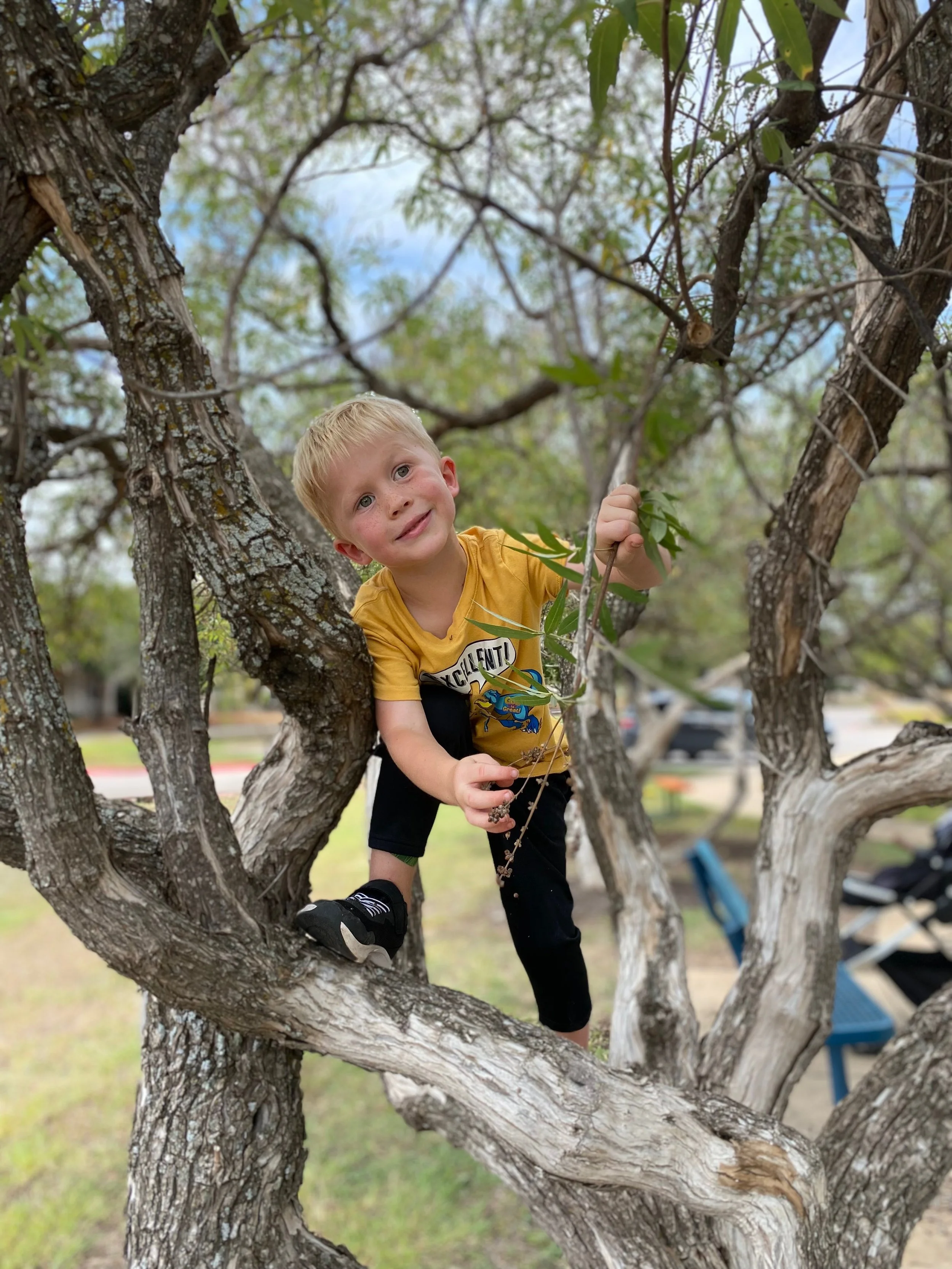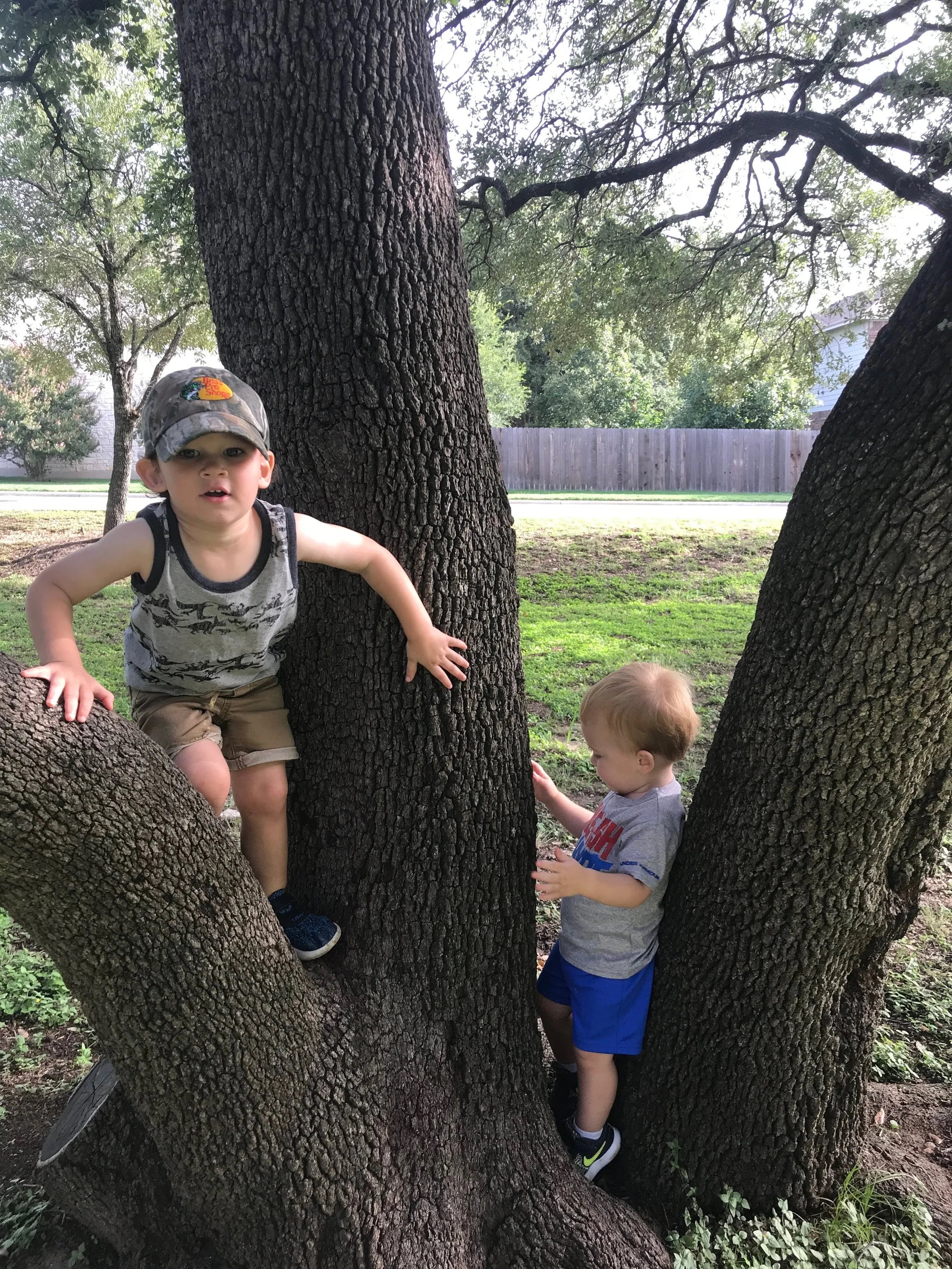Tree Climbing: Is It Worth the Risk?
Around here, we are always on the lookout for good climbing trees. My boys will often run right past the playground equipment to get to the trees—and we encourage it! Why? Because every branch offers a chance for brain building. We can see their bodies working and their brains growing as they climb higher and higher.
Benefits of Tree Climbing for Kids
Nature connection
Research shows that time spent in natural environments is regulating for children. Being outdoors helps lower stress, ease anxiety, and provide a calming reset for busy minds. Climbing trees gives children a direct connection to nature and turns a simple outdoor activity into a tool for emotional regulation.
Physical challenge
Playgrounds are wonderful, but trees provide a different kind of workout. Each climb is unpredictable, requiring new balance, strength, and coordination. This variety keeps kids engaged while strengthening both body and brain. Nature play like tree climbing also helps kids develop gross motor skills and core strength in ways traditional playground equipment cannot.
Risk assessment
When a child stops to test whether a branch can hold their weight, or pauses to decide if they are ready to pull up to the next height, they are practicing valuable skills in judgment and safety. Tree climbing teaches kids how to take safe risks and assess their environment—critical life skills that extend far beyond play.
Body awareness and sensory integration
Navigating a tree requires a child to know exactly where their body is in space. They must coordinate hands and feet, shift weight, and judge distance. This strengthens the proprioceptive and vestibular system, resulting in improved body awareness and balance. Tree climbing is a whole-body sensory experience that supports motor planning, spatial awareness, and self-regulation.
Confidence
There is nothing quite like the look on a child’s face after they conquer a tree that once seemed impossible. That sense of pride and accomplishment doesn’t stop at the tree. It carries into the classroom, the ball field, and everyday challenges. Confidence built in outdoor play often generalizes to many other areas of life.
Is Tree Climbing Safe for Children?
Of course there’s a chance of falling. That possibility is real. But here’s the thing: when kids are allowed to climb early and often, within the boundaries of their own abilities, they gradually develop the strength, coordination, and judgment that actually make accidents less likely.
In our family, we stand nearby at first, offering coaching and encouragement when needed. Over time, we step back and let them take the lead. The skills developed through tree climbing—strength, sensory processing, balance, and resilience—far outweigh the risks.
The Bottom Line
Tree climbing may look like simple outdoor fun, but it is so much more. It is one of the best outdoor activities for kidsbecause it supports child development on multiple levels. With each branch, children are connecting with nature, receiving regulating sensory input, testing their limits, strengthening their bodies, and discovering what they are capable of.
So, is tree climbing worth the risk? Absolutely. The view from the top—and the brain-building, sensory-rich benefits along the way—make it one of the best playgrounds nature has to offer.
Keep the Brain Building Going
At Building Little Brains, we believe everyday play—like climbing trees—is one of the best ways for children to grow strong, confident, and curious. That’s why we created the Little Brain Box, a monthly subscription filled with playful, purposeful activities designed by a pediatric occupational therapist.
Each box is packed with hands-on projects that target the same developmental skills tree climbing supports: sensory processing, balance, fine motor strength, problem solving, and confidence. Think of it as a way to bring the benefits of outdoor exploration right into your home—perfect for after school, weekends, or days when climbing trees isn’t an option.
👉 Learn more about Little Brain Boxes here and give your child screen-free activities that build brains and spark joy all month long.
Kelsi Knife, OTR
Pediatric Occupational Therapist & Co-Founder of Building Little Brains. With a passion for child brain development and a firm belief in the power of play, I help parents turn everyday moments into fun, brain-building opportunities.




